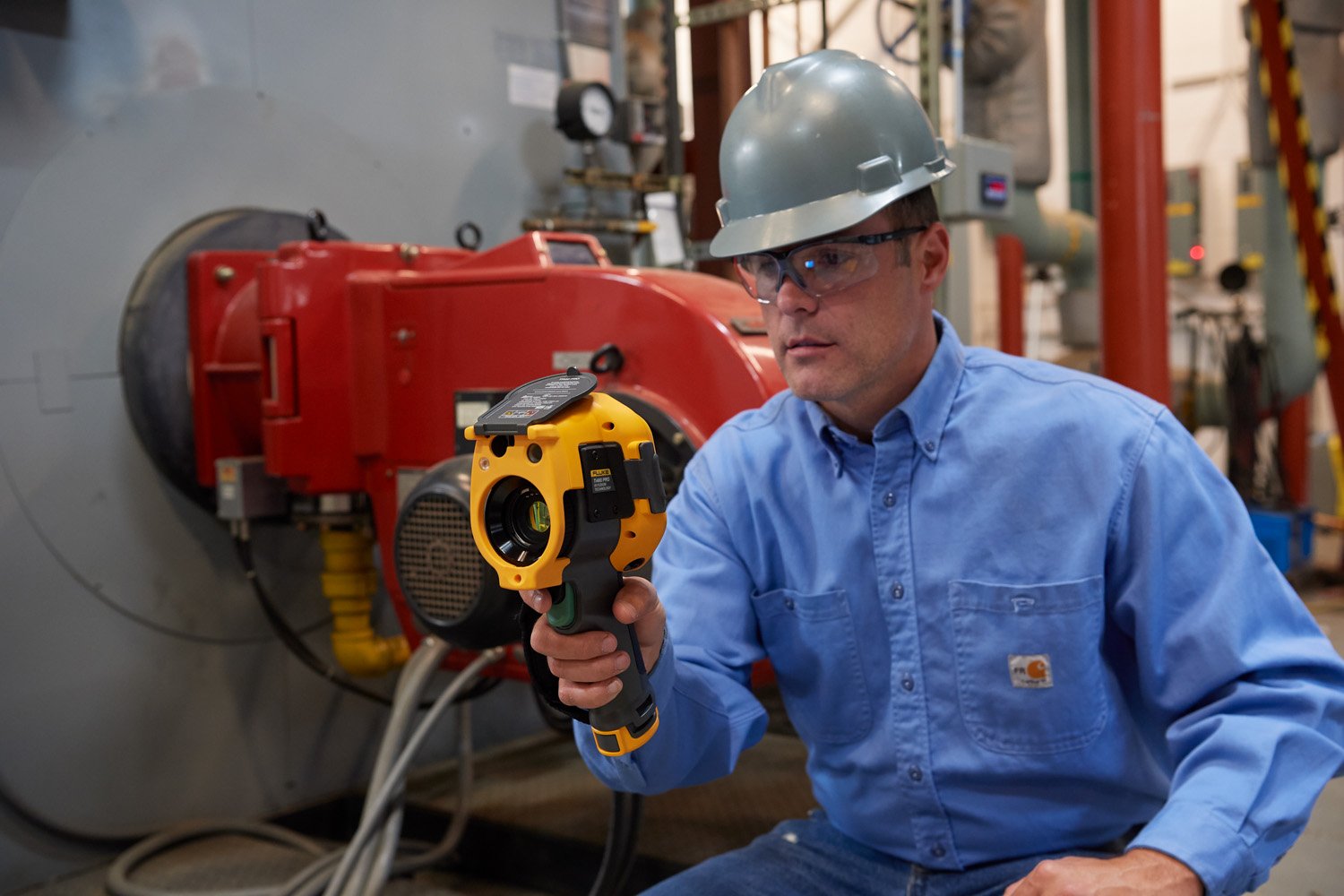The NFPA changed its recommended practice for electrical equipment maintenance to a standard. This means that proper maintenance is now required to keep electrical systems safe and reliable for workers. The purpose of NFPA 70B is to safeguard persons, property, and processes from risks associated with electrical equipment malfunction or failure. Maintenance is crucial for achieving this goal.
 Fluke Ti480 PRO Infrared Camera is one of many Fluke thermal imagers available to help technicians comply with the NFPA 70B standard.
Fluke Ti480 PRO Infrared Camera is one of many Fluke thermal imagers available to help technicians comply with the NFPA 70B standard.Maintenance Requirements
The NFPA 70B standard now requires proper maintenance of electrical equipment to avoid malfunction or failure. Proper maintenance is critical for achieving the worker safety requirements outlined in NFPA 70E. Electrical equipment that has not been properly maintained or is not functioning correctly poses significant risks to workers.
The NEC, NFPA 70B, and NFPA 70E are all crucial components for achieving electrical safety. Making NFPA 70B a standard now enables it to be enforced as a tool to improve overall electrical safety.
Advantages of Fluke Thermal Imaging
Infrared thermography allows for safe and efficient detection of potential issues early enough to act before breakdowns occur. Fluke thermal imaging is a useful tool fora wide variety of equipment and is versatile enough to use for either preventive maintenance or troubleshooting. Because of the non-contact nature, inspections can be made during production or even in dangerous environments by inspecting from a safe distance or behind an IR window It can also quickly scan large areas.
Improving Safety
Using Fluke thermal imaging technology improves safety, as technicians can inspect equipment without directly contacting it or interrupting its operation. Additionally, they can inspect ductwork and ceilings without climbing ladders or using lifts.
By locating potential issues early maintenance teams can fix issues before they turn into big problems. This helps reduce unexpected downtimes by a significant amount. Technicians can use thermal imaging to verify that repairs were successful, thus providing better assurance of repairs.
Commissioning of New Installations
Fluke thermal imaging also facilitates successful commissioning of new installations, documenting the condition at the time of acceptance. Initial documentation can be used for two purposes. It serves as a reference point for future comparison and can help identify possible installation faults, enabling prompt correction or monitoring until repairs can be scheduled.
Preventive and Predictive Maintenance
Fluke thermal imaging can minimize equipment malfunctions and failures. This, in turn, can increase production rates and improve output quality. The imaging technique is particularly effective when used for preventative or predictive maintenance. Additionally, this approach helps maintain optimal production efficiency and safety standards.
To monitor equipment and avoid unplanned downtime, technicians can use thermal imaging to check for thermal anomalies and locate potential problems. This approach enables corrective measures to be planned for ahead of time and corrective measures taken before the problems escalate and cause significant issues.
Fluke thermal imaging is crucial for complying with the new NFPA 70B standard, which outlines specific requirements for electrical equipment maintenance. This technique makes it easier to enforce the necessary measures to ensure compliance. By using this technology properly, technicians can quickly and easily identify potential problems, improving safety, reliability, and production efficiency. Fluke thermal imaging is the key to achieving overall electrical safety and is an essential tool for any thermal technician.